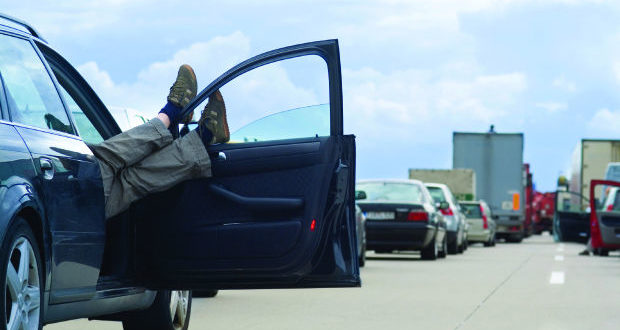The 10 Most Traffic-Jammed Cities
Published on April 16th, 2014
Jim Gorzelany
April 16, 2014
The Times of Northwest Indiana
We play the radio, listen to CDs or enjoy audio books. Many of us talk on our cell phones and, if our observations over the years are any indication, some motorists apply their makeup, shave and even catch up on their reading while stuck in traffic.
While we might be able to salve the symptoms, there’s little any of us can do – short of taking public transportation if it’s available – to avoid the crippling congestion that’s choking the nation’s highways.
How bad is it? The average driver passing through any of the 10 most gridlocked metropolitan areas in the U.S. wasted an average 47 hours sitting in traffic last year, which is equivalent to squandering a week’s vacation.
That’s according to the annual Traffic Scorecard compiled by the traffic information and driver services provider INRIX in Kirkland, Wash., which crowned Los Angeles as the most traffic-clogged city in the U.S. The weather may be beautiful in the City of Angels, but the traffic is ugly, as the average commuter spent 64 additional hours behind the wheel last year than would otherwise be necessary if the freeways were actually moving freely. Motorists negotiating the L.A. corridor tend to experience longer backups than drivers in the most-traffic crazed cities in the U.K., France, Germany, Belgium and the Netherlands.
While California placed no fewer than three major metro areas among INRIX’s list of the 10 worst traffic-clogged cities in the U.S. (see the accompanying box), things, as they say, are bad all over. Congestion thickened in 61 metro areas in the U.S. last year, rising by an average six percent overall. Ironically, INRIX lays the blame for the bump in traffic to the nation’s ongoing financial recovery. Simply put, more jobs mean more cars and trucks on the road, and if the economy continues its upward trend during 2014 as expected, already beleaguered drivers will likely suffer even longer travel times on the nation’s highways.
“While bad news for drivers, the gains we’ve seen in the U.S. in 2013 are cause for optimism about the direction of the economy,” says Bryan Mistele, INRIX president and chief executive officer.
To be sure, many of the U.S. cities on the worst traffic list enjoyed robust gains in employment last year, including: San Jose, Calif., at 3.4 percent; Austin, Texas at 2.8 percent; Seattle, Wash., at 2.6 percent; and Boston at 2.1 percent. Not coincidentally, these areas also saw their populations swell as additional workers relocated to help fill the additional jobs, with Austin topping the list at a 6.6 percent increase.
Don’t expect the situation to improve any time soon, either. With the world’s population continuing to congregate in urban centers – the United Nations predicts that 70 percent of the world’s population will live in or near larger cities by 2050, which is up from about 50 percent today – we’ll see even more cars on the road. Ford estimates the number of autos on the world’s thoroughfares will rise from around a billion today to as many as 4 billion by 2050.
World-class traffic tie-ups like the 2-3 hour daily commutes currently seen in San Paulo, Brazil could become common both here in the U.S. and elsewhere around the globe.
Unfortunately, the solution to the nation’s gridlock is not likely to be found at the business end of a bulldozer. “It’s too late to build our way out of congestion – we’ve learned there is no such thing as ‘shovel ready projects’,” says INRIX’s Mistele. “If we’re to avoid traffic congestion becoming a further drain on our economies, we must invest in intelligent transportation systems and connected car technologies now.”





